The August In-Service Day seems a long time ago now, however, it was the starting point for Cherry Trees ECC, where I have been supporting in my role as TAP Teacher, on their journey of developing their planning process using the cycle in Realising the Ambition.
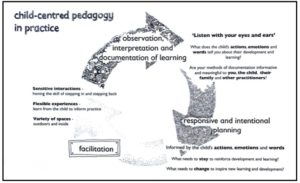
Cherry Trees ECC is a large 52 week establishment, offering a variety of attendance patterns for children aged 2 years to five years. We have a mixture of term time and 52 week staff, part time and full time delivering a service for a current roll of 106 children.
We started off well in August. The 3-5 playroom is split into two zones, with the plan of staff swapping zones at the October holidays. We needed two planning meetings every two weeks:
The planning meetings started with a conversation about our observations of children, what we’ve heard and seen them doing, where their interests and engagement has been (Finding the Threads). Our job was then to plan where we could develop this further with motivating provocations within our learning areas. We discussed bundles of E’s and O’s that we could develop within these provocations. We also worked with the children to record what they already knew in a mind map (Sewing the Threads).
The team had decided not to use floor books, but instead focus on the planning process, and display the learning as it built on a learning wall in each zone.
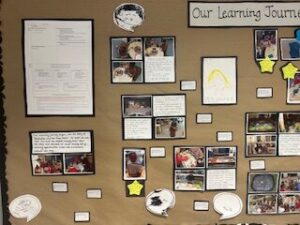
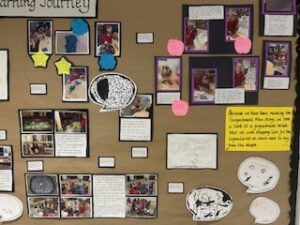
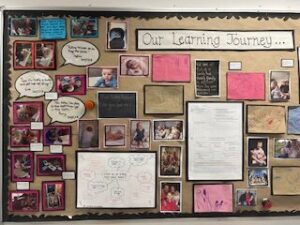
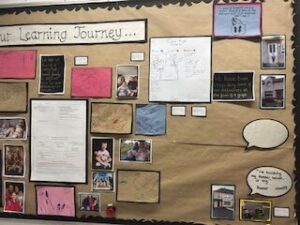
At the next planning meeting it was time to reflect on the learning that had happened (Reflecting on the Threads). Staff were confident talking about what they had observed and been part of. They could see where the children had shown progression. We have ensured that the children’s voices are represented in evaluations.
By the time the October holidays arrived the two zones decided not to swap. Both teams felt they had more work to do in their areas and wanted to develop what they had started further. This was a really positive example of self-evaluation, where staff were invested in progression and depth in learning. The zones did not swap until January, when we were four planning cycles along with well developed zones of learning. We are now focussing on the development of skills within our areas, being cognizant of progression and depth in learning.
So, what have we learned at Cherry Trees ECC?
The Positives:
- Quality planning is delivered by everyone in a setting working collaboratively with a shared understanding
- We need ring fenced time to have conversations about children and their learning to make planning happen.
- Staff are able to articulate and document children’s actions, emotions and words in the planning cycle.
- Child consultation and voice is visible in our planning.
- Children’s engagement is much improved.
- When engagement is high, behaviour improves.
- Outdoors is planned as any other area.
- We give high value the children’s work and notice when achievements and successes happen.
- Our interventions and interactions have improved, to develop challenge and enjoyment.
- We have started using digital examples through creating ‘thinglinks’ to share learning of the whole ECC with families.
- We benefit from having someone taking the lead in planning meetings, being responsible for that cycle’s documentation.
- Learning Journal observations are becoming more focussed on targets and deeper learning
The Challenges:
- We (like many others) have experienced high levels of staff absence over the winter months and combined with staff on maternity leave it has been very challenging to find time to have planning meetings whilst maintaining ratios in the playroom. However, even without planning meetings, the staff have engaged daily in conversations about learning and development of learning.
- The learning walls display development of learning, however, the children are not always engaged with this documentation of their learning.
- It is often difficult to get photographs and documentation printed in good time.
- We are only allowed to display work on the allocated wall boards, which are all high level, above sinks and worktops. OK for adults to look at, not so much for the children.
- Visibly sharing the learning of the ECC with families and visitors is difficult with few display areas available in central areas.
Our next steps:
- Develop more active engagement with children in the documentation of learning. This may include the addition of a floor book.
- Creatively think of ways to share the learning with families and visitors including digital resources.
- Continue to engage in high quality conversations about learning.
We have worked hard at Cherry Trees ECC to keep the momentum going for our planning cycle, and maintain the principles of the child centred pedagogy approach in Realising the Ambition (2020). We are still on our journey, but have made great steps forward and are keen to make it even better!
by Avril Dante


